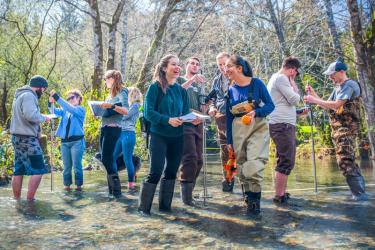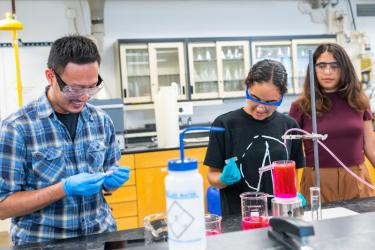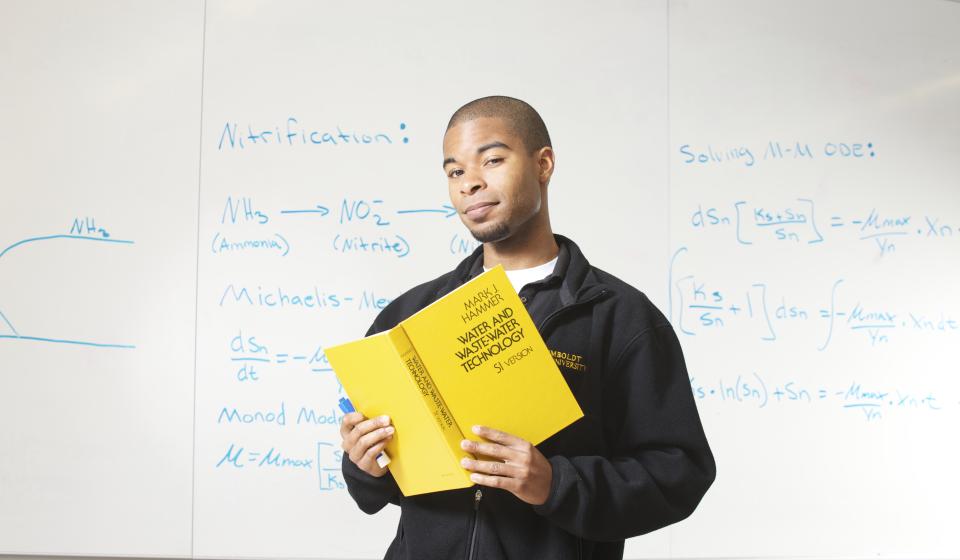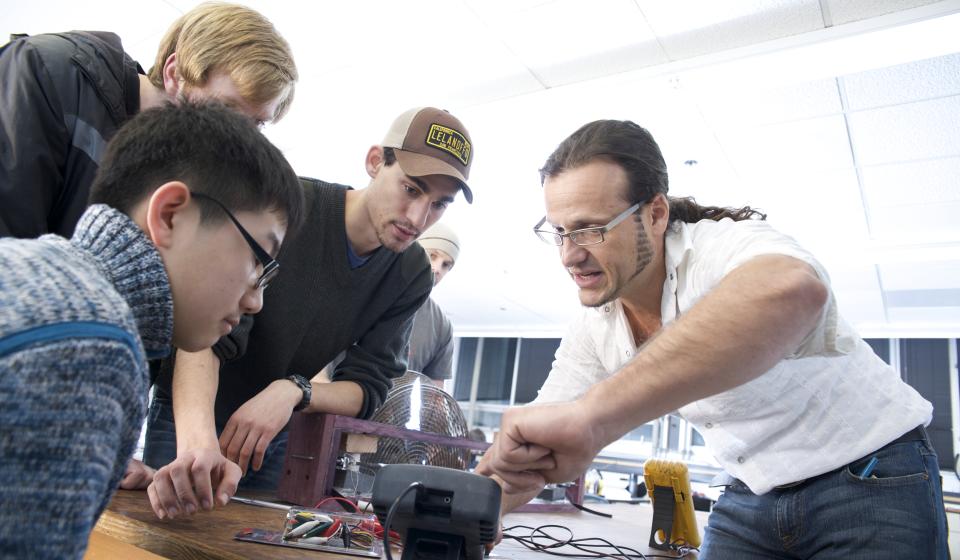Vapor Compression Refrigeration System
The new energy lab/design studio, Jenkins Hall 214, at Humboldt, houses the below pictured vapor compression refrigerant system (VCRS). The VCRS was built in the 1970's and is utilized in ENGR331 and ENGR471 labs to introduce students to the principles, properties, materials, components and thermodynamics of the VCRS. The system is configured with numerous gages to allow for precise measurements used in thermodynamic calculations.

Vapor Compression Refrigerant System VCRS located in Jenkins Hall 214
The Refrigeration Cycle
A schematic of the refrigeration system is shown in Figure 1 , and the system consists of the following components: a compressor; a condenser; an evaporator; and a throttling valve. The R-12 refrigerant undergoes a Process as it passes through each of these components. The properties of the refrigerant change as it passes through each component, and in some cases the phase of the refrigerant also changes. The refrigerant flows continuously through the components, and completes a thermodynamic cycle each time it passes through state 1. The cycle starts with the refrigerant being pressurized in the compressor, the super heated vapor then moves through the condenser which releases the heat energy of the vapor into the "environment" changing its phase from vapor to liquid . The fluid then flows, through a throttling device/ capillary tube, to the evaporator where it is turned back in to a vapor absorbing heat energy from the "environment". The environments where we release and absorb the heat energy can be in our freezers for ice cream or our homes for space heating.

Figure 1: A schematic of the refrigeration system
Practical Application of VCRS
VCRS are an efficient method of moving energy around. Their are utilized in the majority of refrigerators, freezers and air conditioning systems produced today. They also have practical applications as "heat pumps" a term describing an electrically powered VCRS to heat an enclosed space such as your home by transferring heat energy from outside to the inside. Imagine an inside out refrigerator. They also have the potential to be run "backwards", producing electricity. In this form low grade heat energy, such as solar thermal, is put in to the evaporator side and electrical energy is taken out from a turbine or reciprocating engine replacing the compressor.
Links
Sun Frost An Arcata based company manufacturing super efficient refrigerators using VCRS
Nasa Tech Briefs Space age technology describing a Vapor-Compression Solar Refrigerator Without Batteries
How to Apply
So environmental resources engineering sounds interesting, but you are still not sure if Humboldt is right for you? Explore what Humboldt has to offer to both freshman and transfer students.
Paperwork
For paperwork and forms such as major and minor contracts, course planning guides, semester schedules, course rotations, office hours and more, visit our forms page!













